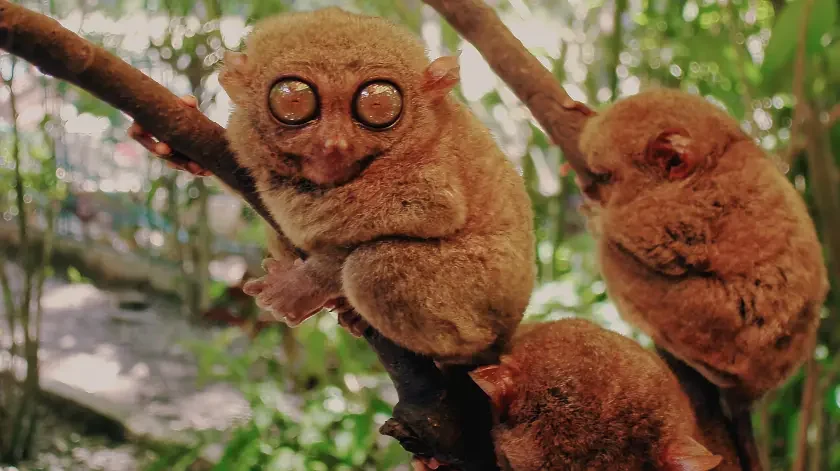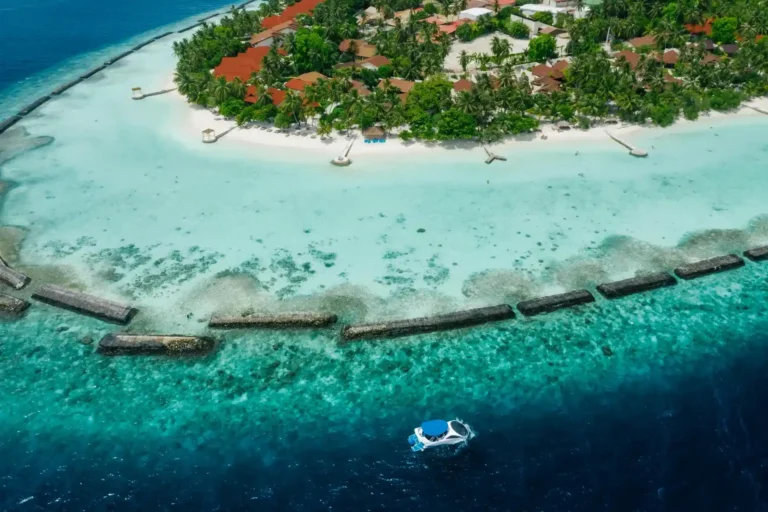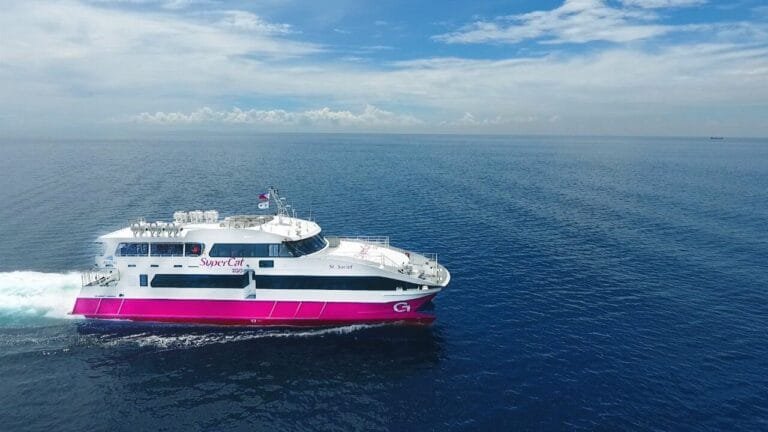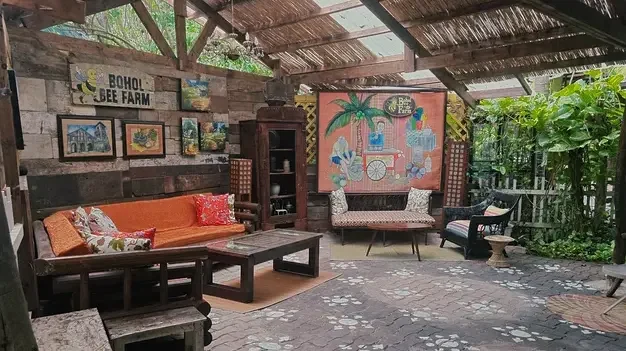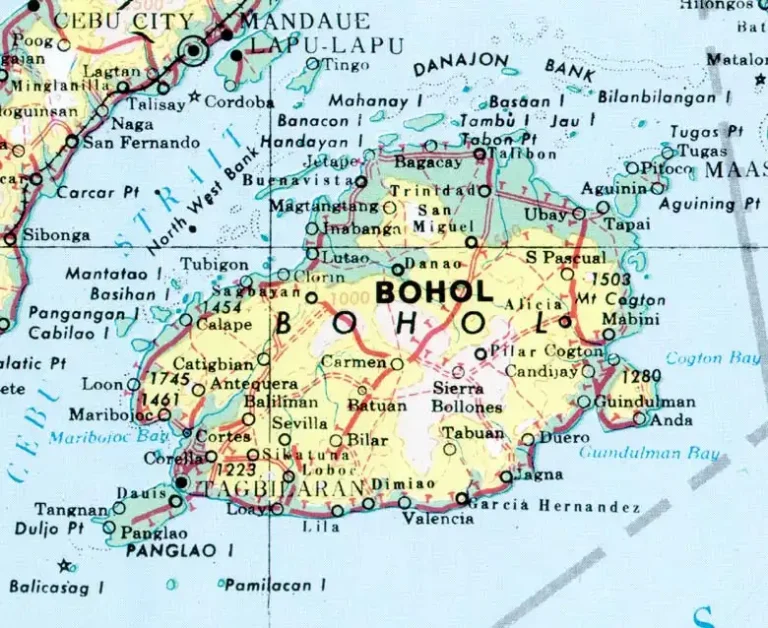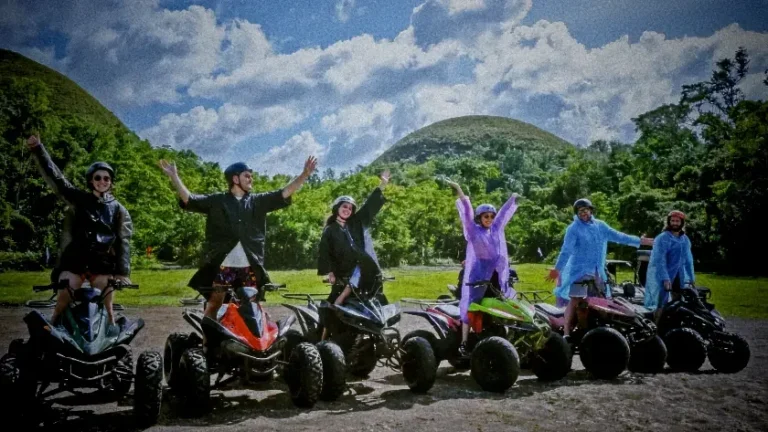Bohol Wildlife & Ecotourism: Protecting Paradise Through Responsible Travel
Bohol stands as one of the Philippines’ premier wildlife destinations, where endemic species like the world’s smallest primate thrive alongside diverse marine ecosystems and lush tropical forests. This 4,821-square-kilometer island province supports over 2,000 documented species across terrestrial and marine environments, making it a critical biodiversity hotspot in Southeast Asia. From the famous Philippine tarsiers to vibrant coral reefs and migratory bird sanctuaries, Bohol wildlife offers extraordinary encounters that inspire conservation awareness while supporting local communities through sustainable ecotourism practices.
[Book on Klook] [Check Viator] [Browse GetYourGuide]
Bohol’s Biodiversity: A Natural Treasure Trove
Endemic Species and Unique Ecosystems
Bohol’s geography creates diverse habitats supporting remarkable biodiversity across limestone karsts, coastal mangroves, coral reefs, and tropical forests. The island’s isolation has fostered endemic species evolution while serving as a crucial stopover for migratory species traveling throughout the Philippines archipelago.
Habitat Diversity:
- Limestone forests: 50,000 hectares supporting endemic flora and fauna
- Mangrove ecosystems: 15,000 hectares of coastal protection and nurseries
- Coral reefs: 25,000 hectares of marine biodiversity hotspots
- Grasslands: 80,000 hectares including the famous Chocolate Hills
- Rivers and wetlands: 200+ waterways supporting freshwater species
- Cave systems: 1,400+ documented caves harboring unique ecosystems
Species Statistics:
- Endemic species: 127 found nowhere else on Earth
- Bird species: 270+ recorded, including 15 endemics
- Marine species: 2,500+ documented in coastal waters
- Plant species: 1,800+ native varieties
- Mammal species: 45+ including the famous tarsier
- Reptile and amphibian species: 85+ documented varieties
The island’s position in the Coral Triangle places it at the heart of global marine biodiversity, while its terrestrial ecosystems support species that evolved in isolation, creating unique evolutionary pathways found nowhere else in the world.
“Bohol represents a living laboratory of evolution and biodiversity. Every forest, reef, and cave system holds species that have adapted uniquely to this remarkable island environment.” – Dr. Maria Gonzales, Philippine Biodiversity Research Institute
[Book on Klook] [Check Viator] [Browse GetYourGuide]

Conservation Challenges and Successes
Conservation Efforts in Bohol balance protection of critical ecosystems with sustainable development that supports 1.3 million residents while accommodating over 1 million annual tourists seeking wildlife experiences.
Major Conservation Programs:
- Protected Areas: 12 established reserves covering 180,000 hectares
- Marine Protected Areas: 47 community-managed sanctuaries
- Endemic Species Programs: Focused protection for tarsiers and other endemics
- Community-Based Conservation: 150+ local organizations involved
- Research Initiatives: 25+ ongoing scientific studies
- Education Programs: Environmental awareness in 300+ schools
Conservation Successes:
- Tarsier population recovery: 30% increase over past decade
- Coral reef restoration: 200 hectares of successful rehabilitation
- Mangrove reforestation: 5,000 hectares replanted since 2010
- Community participation: 85% of coastal communities engaged in conservation
- Sustainable tourism: ₱2.8 billion annually supporting conservation
[Book on Klook] [Check Viator] [Browse GetYourGuide]
The Philippine Tarsier: Bohol’s Iconic Endemic
Understanding the World’s Smallest Primate
The Philippine tarsier (Carlito syrichta) represents Bohol’s most famous endemic species and one of the world’s most remarkable primates. These tiny nocturnal creatures, weighing just 80-160 grams with bodies 10-15 centimeters long, have survived virtually unchanged for 45 million years, making them living fossils that provide insights into primate evolution.
Physical Characteristics:
- Size: 10-15 cm body length, 13-23 cm tail length
- Weight: 80-160 grams (lighter than a smartphone)
- Eyes: 16mm diameter (larger than their brain)
- Hands: Long fingers with disc-like tips for gripping
- Head rotation: 180-degree turning capability
- Fur: Soft, dense, grayish-brown coloration
Unique Adaptations:
- Echolocation abilities: Sound-based navigation like bats
- Vertical clinging: Specialized for tree-dwelling lifestyle
- Nocturnal vision: Excellent night vision for hunting
- Communication: Ultrasonic calls above human hearing range
- Territorial behavior: Marking territory with scent glands
Behavioral Patterns:
- Activity: Strictly nocturnal, sleeping during day
- Diet: Carnivorous – insects, spiders, small vertebrates
- Social structure: Solitary except during mating season
- Reproduction: Single offspring after 6-month gestation
- Lifespan: 12-20 years in protected environments
[Book on Klook] [Check Viator] [Browse GetYourGuide]
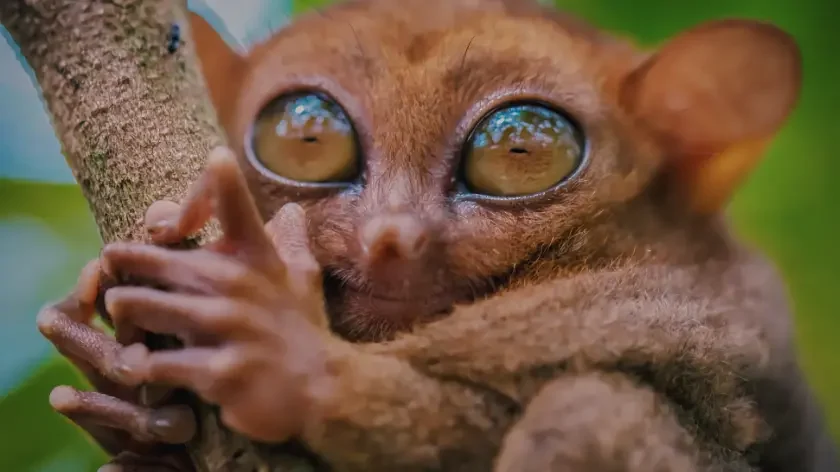
Tarsier Conservation Areas
Philippine Tarsier Foundation operates the premier tarsier sanctuary in Corella, protecting 134 hectares of critical habitat while providing educational experiences that fund conservation efforts and community development programs.
Tarsier Sanctuary Details:
- Location: Corella Municipality, 20 km from Tagbilaran
- Protected area: 134 hectares of primary and secondary forest
- Tarsier population: 150+ individuals in sanctuary
- Daily visitors: Limited to 500 to minimize stress
- Operating hours: 8:00 AM to 4:00 PM daily
- Admission: ₱60 adults, ₱45 children (funds conservation)
Sanctuary Features:
- Guided tours: 45-minute educational walks with trained guides
- Observation areas: Designated viewing points minimizing disturbance
- Research facilities: Scientific study and monitoring programs
- Education center: Interactive exhibits about tarsier biology
- Gift shop: Proceeds support conservation and local communities
- Rehabilitation center: Care for injured or orphaned tarsiers
Conservation Programs:
- Habitat protection: Forest preservation and restoration
- Research initiatives: Population monitoring and behavioral studies
- Community education: Local awareness and involvement programs
- Breeding programs: Genetic diversity maintenance
- Rescue operations: Emergency response for threatened tarsiers
[Book on Klook] [Check Viator] [Browse GetYourGuide]
Responsible Tarsier Viewing
Ethical Guidelines ensure that tarsier encounters contribute to conservation while minimizing stress on these sensitive creatures that can literally die from shock when frightened or handled improperly.
Viewing Rules:
- No flash photography: Bright lights can cause fatal stress
- Maintain distance: Minimum 3-meter separation from tarsiers
- Quiet voices: Loud sounds can damage sensitive hearing
- No touching: Human contact is prohibited for health and safety
- Stay on paths: Designated routes protect habitat and reduce disturbance
- Group size limits: Maximum 10 visitors per guide
Best Viewing Times:
- Late afternoon: 3:00-4:00 PM when tarsiers begin activity
- Early evening: Just before sanctuary closing
- Rainy season: Higher activity during humid conditions
- Avoid midday: Tarsiers are sleeping and shouldn’t be disturbed
Photography Ethics:
- Natural lighting only: No flash or artificial illumination
- Telephoto lenses: Maintain distance while capturing images
- Respect behavior: Don’t disturb feeding or social interactions
- Share responsibly: Promote conservation through imagery
“The tarsier sanctuary visit changed my perspective on conservation. Seeing these ancient creatures surviving in protected habitat shows how tourism can directly support wildlife preservation.” – Dr. James Chen, Wildlife Photographer [Book on Klook] [Check Viator] [Browse GetYourGuide]
Marine Ecosystems and Coral Reef Conservation
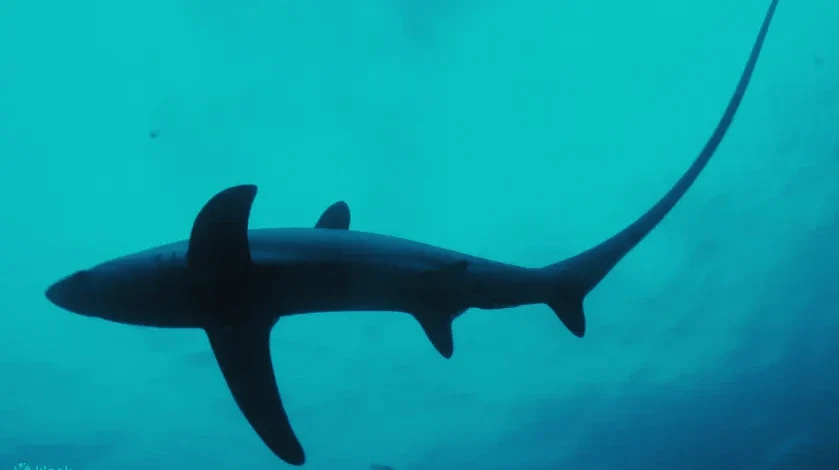
Bohol’s Coral Triangle Heritage
Bohol’s marine environment sits within the Coral Triangle, Earth’s epicenter of marine biodiversity supporting 75% of all known coral species and 40% of reef fish species across 25,000 hectares of coral reefs surrounding the island.
Marine Biodiversity Statistics:
- Coral species: 380+ documented varieties
- Fish species: 2,500+ marine species recorded
- Sea turtle species: 5 species including critically endangered hawksbills
- Marine mammal species: 25+ including dolphins, whales, and dugongs
- Mollusk species: 800+ shells and sea creatures
- Crustacean species: 400+ crabs, lobsters, and shrimps
Major Reef Systems:
- Panglao Island reefs: 5,000 hectares of diverse coral formations
- Balicasag Island: Marine sanctuary with 80% coral coverage
- Pamilacan Island: Dolphin and whale watching waters
- Cabilao Island: Renowned diving destination
- Anda Peninsula: Pristine coastal reef systems
Marine Protected Areas and Sanctuaries
Community-Based Marine Sanctuaries cover 12,000 hectares across Bohol’s coastline, demonstrating successful local management that balances conservation with sustainable fishing and tourism livelihoods. [Book on Klook] [Check Viator] [Browse GetYourGuide]
Major Marine Sanctuaries:
Balicasag Island Marine Sanctuary:
- Protection area: 800 hectares of no-take zones
- Coral coverage: 80% live coral with excellent health
- Fish biomass: 300% higher than unprotected areas
- Visitor facilities: Eco-friendly tourism infrastructure
- Research programs: Long-term monitoring since 1985
Pamilacan Island Marine Sanctuary:
- Protection area: 1,200 hectares including whale migration routes
- Marine mammals: 7 dolphin species, seasonal whale visits
- Turtle nesting: Important hawksbill turtle habitat
- Community involvement: Former whale hunters now guides
- Success metrics: 400% increase in fish populations
Anda Marine Protected Area:
- Protection area: 2,500 hectares of pristine reefs
- Conservation status: Excellent coral health ratings
- Species diversity: 1,800+ marine species documented
- Sustainable tourism: Limited visitor numbers
- Research partnerships: University collaboration programs
Marine Wildlife Encounters
Responsible Marine Tourism provides incredible wildlife experiences while supporting conservation through entrance fees, guide employment, and environmental education that promotes ocean protection. [Book on Klook] [Check Viator] [Browse GetYourGuide]
Dolphin and Whale Watching:
- Species observed: 7 dolphin species, 3 whale species seasonally
- Best locations: Pamilacan Island, Balicasag waters
- Success rates: 85% dolphin sightings, 40% whale encounters (seasonal)
- Tour duration: 3-4 hours including travel time
- Cost: ₱1,500-₱2,500 per person including boat and guide
Sea Turtle Encounters:
- Species: Green, hawksbill, and loggerhead turtles
- Best sites: Balicasag, Panglao, and Anda reefs
- Nesting season: May-September for optimal viewing
- Viewing guidelines: 3-meter distance, no touching, limited time
- Conservation contribution: Tour fees support protection programs
Coral Reef Snorkeling and Diving:
- Difficulty levels: Beginner-friendly to advanced sites
- Visibility: 15-30 meters year-round
- Water temperature: 26-29°C comfortable for extended periods
- Equipment: Rental available at all major sites
- Guided tours: Marine biologist guides available
Book marine wildlife tours through our trusted partners to ensure responsible operators who follow conservation guidelines while providing unforgettable encounters!
Terrestrial Wildlife and Forest Ecosystems

Endemic Birds and Birdwatching
Bohol’s avian diversity includes 270+ species with 15 endemics found nowhere else on Earth, making it a premier birdwatching destination in the Philippines with habitats ranging from coastal mangroves to mountain forests. [Book on Klook] [Check Viator] [Browse GetYourGuide]
Endemic Bird Species:
- Bohol Hanging Parrot: Colorful small parrot endemic to Bohol
- Mindanao Bleeding-heart: Ground pigeon with distinctive red breast
- Philippine Frogmouth: Nocturnal bird with cryptic camouflage
- Rufous-lored Kingfisher: Forest kingfisher with distinctive coloring
- Azure-breasted Pitta: Rare forest floor species
Common Resident Species:
- Philippine Eagle-Owl: Large nocturnal predator
- Tarictic Hornbill: Important seed disperser
- Colasisi: Small green parrot in agricultural areas
- Maya: Ubiquitous rice bird throughout the island
- Kalaw: Large ground hornbill in forest areas
Best Birdwatching Locations:
- Rajah Sikatuna National Park: Primary forest habitat
- Chocolate Hills: Grassland and edge species
- Loboc River: Riparian and wetland birds
- Mangrove areas: Coastal and waterbird species
- Agricultural areas: Open country and edge species
Birdwatching Tours:
- Half-day tours: ₱1,500-₱2,500 per person with guide
- Full-day expeditions: ₱3,000-₱4,500 including multiple habitats
- Multi-day programs: ₱8,000-₱15,000 for serious birders
- Equipment: Binoculars and field guides provided
- Best times: Early morning (5:30-9:00 AM) and late afternoon
Rajah Sikatuna National Park
Rajah Sikatuna National Park protects 9,023 hectares of Bohol’s last remaining primary forest, serving as a critical refuge for endemic species and an important watershed for surrounding communities. [Book on Klook] [Check Viator] [Browse GetYourGuide]
Park Features:
- Established: 1987 as national protected area
- Elevation range: 200-870 meters above sea level
- Forest types: Primary dipterocarp and secondary growth
- Endemic species: 45+ plant species, 25+ animal species
- Research programs: 15+ ongoing biological studies
Wildlife Highlights:
- Flying lemur (Cynocephalus volans): Gliding mammal
- Philippine warty pig: Endemic wild pig species
- Monitor lizards: Large reptiles in forest streams
- Fruit bats: Important pollinators and seed dispersers
- Endemic insects: Hundreds of undescribed species
Ecotourism Activities:
- Hiking trails: 5 marked trails from easy to challenging
- Canopy walks: Elevated platforms for forest viewing
- Bird watching: 150+ species recorded in park
- Photography tours: Guided sessions for nature photography
- Research participation: Citizen science opportunities
Visiting Information:
- Access: 45 minutes from Tagbilaran via Bilar
- Entry fees: ₱30 per person (supports park maintenance)
- Guided tours: ₱500-₱1,200 depending on trail and duration
- Facilities: Visitor center, restrooms, picnic areas
- Best season: December-April for optimal weather
Cave Ecosystems and Unique Wildlife
Bohol’s limestone geology creates over 1,400 documented caves supporting unique ecosystems with endemic species adapted to underground environments, from blind cave fish to specialized invertebrates. [Book on Klook] [Check Viator] [Browse GetYourGuide]
Major Cave Systems:
- Mag-Aso Falls Cave: Underground river and waterfall
- Hinagdanan Cave: Underground lake with unique formations
- Francisco Dagohoy Cave: Historical and biological significance
- Candijay Caves: Complex limestone cave systems
- Duero Cave Churches: Natural formations and wildlife
Cave Wildlife:
- Swiftlets: Birds creating edible nests
- Fruit bats: Multiple species roosting in caves
- Cave spiders: Endemic arachnids adapted to darkness
- Blind cave fish: Evolved without functional eyes
- Cave crickets: Specialized insect communities
- Endemic gastropods: Cave-dwelling snails and slugs
Cave Conservation:
- Visitor limits: Controlled access to protect ecosystems
- Lighting restrictions: Minimal artificial illumination
- Waste management: Strict leave-no-trace policies
- Research permits: Scientific study coordination
- Community involvement: Local guides and protection
“Bohol’s caves are like time capsules of evolution. Species have adapted to total darkness over millions of years, creating ecosystems found nowhere else on Earth.” – Dr. Roberto Clemente, Speleologist and Cave Biologist
Mangrove Ecosystems and Coastal Wildlife
Mangrove Forest Conservation
Bohol’s mangrove ecosystems cover 15,000 hectares along the coastline, serving as critical nurseries for marine life, natural barriers against storms, and carbon sequestration systems that combat climate change while supporting local fishing communities. [Book on Klook] [Check Viator] [Browse GetYourGuide]
Mangrove Species Diversity:
- Rhizophora (Red Mangrove): Distinctive prop root systems
- Avicennia (Black Mangrove): Salt-tolerant pioneer species
- Sonneratia (Pedale): Large trees providing bird habitat
- Nypa (Nipa Palm): Freshwater mangrove supporting crafts
- Bruguiera: Dense growth creating wildlife corridors
Ecological Functions:
- Nursery habitat: 80% of commercial fish species depend on mangroves
- Storm protection: Natural barriers reducing coastal erosion
- Carbon storage: 3-5 times more carbon than terrestrial forests
- Water filtration: Natural treatment of coastal runoff
- Biodiversity support: 200+ species rely on mangrove ecosystems
Mangrove Wildlife
Mangrove Wildlife includes specialized species adapted to tidal environments, from colorful birds to unique marine creatures that thrive in the brackish water interface between land and sea. [Book on Klook] [Check Viator] [Browse GetYourGuide]
Bird Species:
- Little Egret: Elegant white wading bird
- Great Blue Heron: Large predatory waterbird
- White-bellied Sea Eagle: Apex predator of coastal areas
- Collared Kingfisher: Colorful fishing specialist
- Mangrove Blue Flycatcher: Endemic forest edge species
Marine and Amphibious Species:
- Mudskippers: Fish that climb mangrove roots
- Fiddler crabs: Displaying males with oversized claws
- Archer fish: Shooting water to catch insects
- Juvenile fish: Nursery for 150+ marine species
- Saltwater crocodiles: Rare but present in remote areas
Reptiles and Mammals:
- Monitor lizards: Large predators in mangrove waters
- Flying foxes: Fruit bats roosting in mangrove trees
- Macaque monkeys: Occasional visitors from forest areas
- Pythons: Non-venomous constrictors in dense growth
- Sea snakes: Venomous marine species in deeper channels
Mangrove Ecotourism
Sustainable Mangrove Tours provide income for coastal communities while educating visitors about ecosystem importance and conservation needs. [Book on Klook] [Check Viator] [Browse GetYourGuide]
Tour Options:
- Guided boat tours: 2-3 hours through mangrove channels (₱800-₱1,500 per person)
- Kayaking adventures: Paddle through quiet waterways (₱600-₱1,200 per person)
- Walking tours: Boardwalk systems where available (₱300-₱800 per person)
- Photography tours: Specialized wildlife photography (₱1,500-₱3,000 per person)
- Educational programs: School groups and conservation awareness
Best Mangrove Locations:
- Loboc River: Accessible from famous river cruise
- Maribojoc coastal areas: Community-managed conservation
- Ubay mangroves: Pristine northern coast systems
- Candijay wetlands: Diverse bird watching opportunities
- Talibon mangroves: Seaweed farming integration
Conservation Activities:
- Mangrove planting: Volunteer opportunities (₱500-₱1,000 including materials)
- Monitoring programs: Citizen science participation
- Community workshops: Learn traditional sustainable practices
- Clean-up activities: Beach and mangrove restoration
- Educational visits: School and university programs
Sustainable Ecotourism Practices
Responsible Wildlife Tourism Guidelines
Responsible Wildlife Tourism ensures that Bohol wildlife encounters contribute to conservation while providing authentic experiences that educate visitors about biodiversity importance and protection needs. [Book on Klook] [Check Viator] [Browse GetYourGuide]
Core Principles:
- Minimal impact: Leave no trace and disturb no wildlife
- Education focus: Learn about conservation and ecology
- Community benefit: Support local guides and businesses
- Scientific contribution: Participate in research when possible
- Cultural respect: Honor traditional knowledge and practices
Wildlife Viewing Ethics:
- Maintain distance: Follow species-specific guidelines
- Avoid feeding: Natural diet maintenance essential
- Quiet observation: Minimize noise and disturbance
- Respect breeding: Extra caution during nesting seasons
- Group size limits: Small groups reduce impact
Photography Guidelines:
- Natural behavior: Don’t alter animal behavior for photos
- No flash: Avoid artificial lighting that disturbs wildlife
- Patience: Wait for natural opportunities rather than forcing encounters
- Share responsibly: Promote conservation through imagery
- Respect privacy: Some moments shouldn’t be photographed
Community-Based Conservation Tourism
Community Involvement in ecotourism ensures that local residents benefit from wildlife conservation while gaining economic incentives to protect natural resources and traditional knowledge. [Book on Klook] [Check Viator] [Browse GetYourGuide]
Community Programs:
- Local guide training: Certification programs for nature guides
- Homestay networks: Accommodation with conservation families
- Handicraft cooperatives: Sustainable income from traditional crafts
- Organic farming: Pesticide-free agriculture supporting wildlife
- Traditional knowledge: Elder-led programs sharing ecological wisdom
Economic Benefits:
- Guide employment: 500+ certified nature guides employed
- Tourism income: ₱1.8 billion annually supporting conservation
- Alternative livelihoods: Reduced pressure on natural resources
- Youth engagement: Environmental careers for next generation
- Women’s empowerment: Leadership opportunities in ecotourism
Conservation Success Stories
Measurable Conservation Gains demonstrate how sustainable tourism directly contributes to wildlife protection and habitat restoration across Bohol. [Book on Klook] [Check Viator] [Browse GetYourGuide]
Tarsier Population Recovery:
- 2010 population: 800-1,000 individuals island-wide
- 2024 population: 1,200-1,400 individuals (30% increase)
- Protected habitat: 15,000 hectares under community management
- Tourism contribution: ₱50 million annually funding protection
- Community engagement: 25 barangays participating in conservation
Marine Sanctuary Success:
- Fish biomass increase: 300% in protected areas vs. unprotected
- Coral recovery: 200 hectares successfully restored
- Sea turtle nesting: 40% increase in successful nests
- Community compliance: 95% adherence to fishing regulations
- Tourism revenue: ₱300 million annually supporting marine conservation
Forest Restoration:
- Reforestation area: 5,000 hectares replanted since 2015
- Native species: 200,000+ indigenous trees planted
- Bird population: 25% increase in forest-dependent species
- Watershed protection: Improved water quality and availability
- Carbon sequestration: 50,000 tons CO2 annually absorbed
Seasonal Wildlife Viewing and Best Times to Visit
Optimal Seasons for Different Species
Seasonal Patterns affect wildlife activity and visibility, with distinct wet and dry seasons creating optimal viewing opportunities for different species throughout the year. [Book on Klook] [Check Viator] [Browse GetYourGuide]
Dry Season (December-April):
- Tarsier viewing: Most active during cooler, less humid weather
- Bird watching: Resident species most vocal and visible
- Marine activities: Calm seas ideal for dolphin watching and diving
- Cave exploration: Dry conditions best for spelunking
- Photography: Clear skies and excellent lighting conditions
Wet Season (May-November):
- Migratory birds: Peak arrival times for winter visitors
- Turtle nesting: Sea turtle nesting season (May-September)
- Forest wildlife: Lush conditions increase animal activity
- Flowering plants: Best time for botanical photography
- Waterfall access: Full water flow creates spectacular scenery
Transition Periods:
- May: Excellent for both resident and arriving migratory species
- November: Peak wildlife activity as dry season begins
- September: Turtle nesting overlaps with improving weather
- March: Optimal combination of weather and wildlife activity
Daily Wildlife Activity Patterns
Timing Visits to coincide with natural wildlife activity patterns significantly improves viewing success while reducing disturbance to animals during rest periods. [Book on Klook] [Check Viator] [Browse GetYourGuide]
Dawn Activities (5:30-7:30 AM):
- Bird watching: Peak vocal activity and feeding
- Tarsier observation: Transition from night to day activity
- Marine mammals: Calm morning waters ideal for spotting
- Forest mammals: Early morning feeding before heat increases
- Photography: Golden hour lighting for exceptional images
Daytime Activities (8:00 AM-5:00 PM):
- Marine tourism: Diving and snorkeling in optimal conditions
- Cave exploration: Safe access and good visibility
- Mangrove tours: Tide-dependent but excellent for education
- Botanical walks: Plant identification and forest ecology
- Research participation: Citizen science projects and monitoring
Evening Activities (5:00-7:00 PM):
- Bat watching: Evening emergence from roosts
- Nocturnal preparation: Animals beginning night activity
- Sunset photography: Golden hour for landscape and wildlife
- Cultural integration: Community activities and traditional knowledge
- Night tour preparation: Equipment checks and safety briefings
Night Activities (7:00 PM-5:00 AM):
- Tarsier peak activity: Natural hunting and social behavior
- Nocturnal birds: Owl calls and night bird activity
- Insect diversity: Peak activity for endemic invertebrates
- Specialized tours: Night walks with trained naturalist guides
- Research opportunities: Nocturnal wildlife monitoring projects
“Understanding natural rhythms is key to successful wildlife viewing. The best encounters happen when we align our visits with animals’ natural behavior patterns.” – Maria Santos, Certified Nature Guide
Scientific Research and Citizen Science Opportunities
Ongoing Research Projects
Scientific Research in Bohol involves international partnerships studying biodiversity, conservation effectiveness, and climate change impacts, with opportunities for tourists to participate in citizen science programs. [Book on Klook] [Check Viator] [Browse GetYourGuide]
Current Research Programs:
- Tarsier Behavioral Ecology: University of the Philippines study on social behavior
- Coral Reef Resilience: Climate change adaptation research
- Endemic Bird Monitoring: Population trends and habitat requirements
- Cave Biodiversity Surveys: Discovering new species in limestone caves
- Marine Mammal Migration: Tracking dolphin and whale movements
- Mangrove Carbon Storage: Climate mitigation research
Research Institutions Involved:
- University of the Philippines: Marine and terrestrial ecology programs
- Silliman University: Marine biology and conservation studies
- International partnerships: Collaboration with universities worldwide
- Government agencies: DENR and other conservation organizations
- NGO partnerships: Local and international conservation groups
Citizen Science Participation
Visitor Participation in scientific research provides valuable data while creating meaningful educational experiences that deepen understanding of conservation challenges and solutions. [Book on Klook] [Check Viator] [Browse GetYourGuide]
Available Programs:
- Bird counts: Christmas Bird Count and quarterly surveys (₱500-₱1,200 per day)
- Coral reef monitoring: Reef health assessments (₱1,500-₱2,500 per day)
- Tarsier behavior documentation: Observation and data recording (₱800-₱1,500 per session)
- Marine debris tracking: Beach cleanup data collection (₱300-₱800 per session)
- Endemic species photography: Documentation for scientific databases (₱1,000-₱2,000 per day)
Training Requirements:
- Basic orientation: 2-hour introduction to methods and protocols
- Species identification: Training in recognizing target species
- Data recording: Proper documentation techniques
- Safety protocols: Risk management in field conditions
- Cultural sensitivity: Respectful interaction with local communities
Research Contributions:
- Scientific publications: Participant data included in peer-reviewed studies
- Conservation planning: Research informing protection strategies
- International databases: Contributing to global biodiversity knowledge
- Education materials: Creating resources for future conservation education
- Policy development: Research supporting environmental legislation
Book citizen science programs through our trusted partners to ensure proper training, meaningful participation, and valuable contributions to Bohol wildlife conservation!
Conservation Challenges and Future Outlook
Current Threats to Bohol Wildlife
Conservation Challenges facing Bohol wildlife require ongoing attention and innovative solutions that balance development needs with ecosystem protection and species survival. [Book on Klook] [Check Viator] [Browse GetYourGuide]
Primary Threats:
- Habitat loss: Agricultural expansion and coastal development
- Climate change: Rising temperatures and changing precipitation patterns
- Pollution: Agricultural runoff and plastic waste in marine areas
- Overfishing: Pressure on marine resources and food webs
- Tourism pressure: Unregulated development and visitor impact
- Invasive species: Non-native plants and animals disrupting ecosystems
Specific Species Challenges:
- Tarsier habitat fragmentation: Forest clearing isolating populations
- Coral bleaching: Temperature stress affecting reef systems
- Sea turtle nest disturbance: Beach development and lighting impacts
- Bird habitat loss: Conversion of forest to agriculture
- Mangrove clearing: Coastal development removing critical habitat
Conservation Solutions and Innovations
Innovative Approaches to wildlife conservation in Bohol demonstrate how community engagement, technology, and sustainable tourism can create effective protection while supporting local development. [Book on Klook] [Check Viator] [Browse GetYourGuide]
Technology Integration:
- GPS tracking: Monitoring animal movements and habitat use
- Camera traps: Non-invasive wildlife population monitoring
- Drone surveys: Aerial habitat assessment and protection
- Mobile apps: Citizen science data collection and reporting
- Satellite monitoring: Real-time deforestation and development tracking
Community-Based Solutions:
- Conservation agreements: Formal partnerships with local communities
- Alternative livelihoods: Sustainable income sources reducing pressure on resources
- Education programs: Environmental awareness from elementary through university
- Traditional knowledge integration: Combining scientific and indigenous conservation methods
- Youth engagement: Next generation conservation leadership development
Policy and Legal Framework:
- Protected area expansion: Increasing coverage of critical habitats
- Marine sanctuary networks: Connected protection across Bohol waters
- Wildlife trafficking prevention: Enforcement of protective legislation
- Sustainable tourism standards: Certification and monitoring of operators
- International cooperation: Regional conservation partnerships
Future Conservation Outlook
Long-term Conservation Goals for Bohol wildlife focus on ecosystem resilience, species recovery, and sustainable development that maintains biodiversity while supporting human communities. [Book on Klook] [Check Viator] [Browse GetYourGuide]
2030 Conservation Targets:
- Protected area coverage: 30% of Bohol’s terrestrial and marine areas
- Tarsier population: Stable populations in 20+ protected sites
- Coral reef health: 70% of reefs in good to excellent condition
- Community engagement: 100% of coastal communities participating in conservation
- Research capacity: 10 permanent research stations across the island
- Sustainable tourism: Carbon-neutral tourism operations
Emerging Opportunities:
- Blue carbon projects: Mangrove restoration for climate mitigation
- Biodiversity credits: Payment for ecosystem services
- Conservation technology: AI and remote sensing for monitoring
- Regional cooperation: Transboundary conservation initiatives
- Climate adaptation: Helping species and ecosystems adapt to change
Visitor Role in Conservation:
- Choose responsible operators: Support certified sustainable tourism providers
- Participate in research: Contribute to scientific knowledge through citizen science
- Support local communities: Purchase from conservation-supporting businesses
- Spread awareness: Share conservation messages through social media and travel stories
- Make donations: Contribute to conservation organizations working in Bohol
Planning Your Bohol Wildlife Adventure
Creating a Comprehensive Itinerary
Multi-Day Wildlife Tours allow comprehensive exploration of Bohol’s diverse ecosystems while supporting conservation through responsible ecotourism that benefits local communities. [Book on Klook] [Check Viator] [Browse GetYourGuide]
5-Day Wildlife Intensive:
- Day 1: Tarsier Sanctuary and Chocolate Hills geological tour
- Day 2: Marine sanctuary snorkeling and dolphin watching
- Day 3: Rajah Sikatuna National Park hiking and birdwatching
- Day 4: Mangrove ecosystem tour and conservation workshop
- Day 5: Cave exploration and citizen science participation
7-Day Conservation Expedition:
- Days 1-2: Tarsier research participation and habitat restoration
- Days 3-4: Marine conservation diving and coral monitoring
- Days 5-6: Forest ecology study and endemic species surveys
- Day 7: Community conservation projects and cultural exchange
Budget Considerations:
- Budget ecotours: ₱2,500-₱4,000 per day including guides and transportation
- Mid-range programs: ₱5,000-₱8,000 per day with additional activities
- Premium expeditions: ₱10,000-₱15,000 per day with expert naturalists
- Research participation: Additional ₱1,000-₱3,000 per program
- Conservation donations: Voluntary contributions supporting protection efforts

